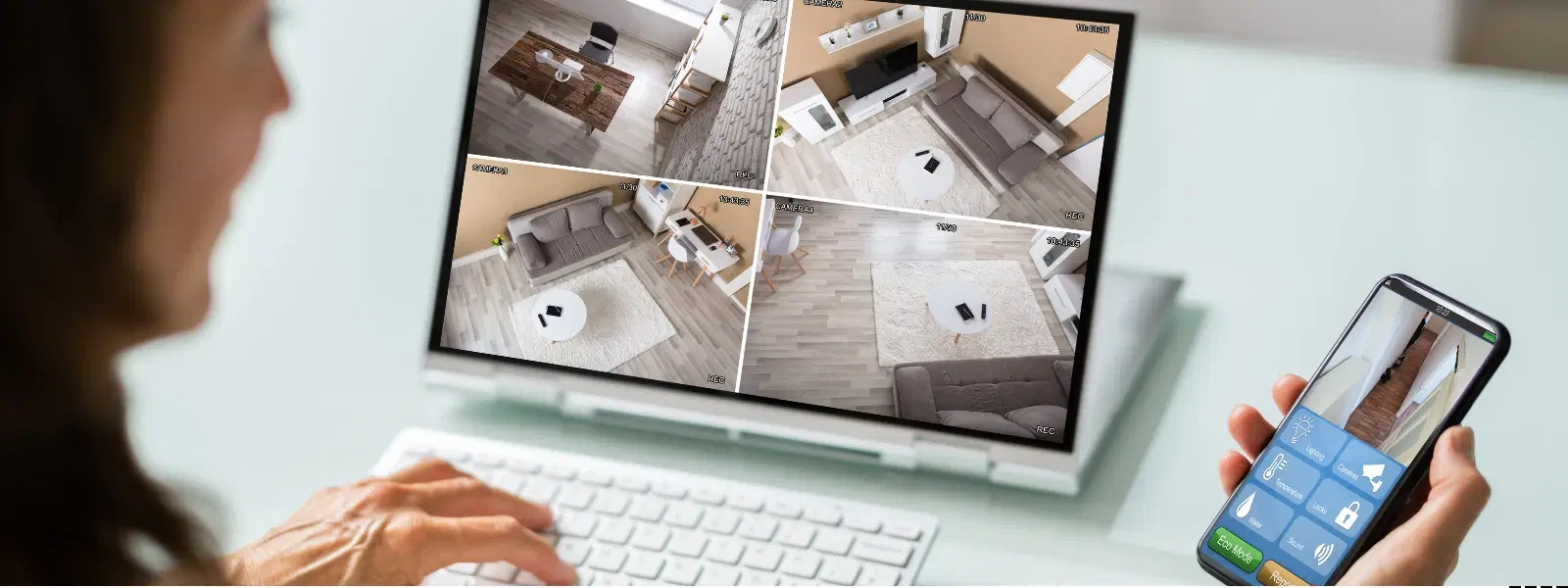
Consumer Electronics
•03 min read
Setting up a CCTV camera system might seem daunting, but with the right guidance, even beginners can master it effortlessly. CCTV systems play a vital role in securing homes and businesses by providing round-the-clock monitoring. This guide answers your frequently asked questions with clear steps and troubleshooting tips, empowering you to connect your CCTV camera with confidence.
A CCTV camera system is a network of cameras, a recording device such as a DVR/NVR, monitors, and other accessories. The components work together to capture, record, and display footage. For a successful system, every piece – from the wiring to the power supply – needs to work in harmony.
When deciding how to connect a CCTV camera, it is important to understand the difference between wired and wireless setups. Wired systems rely on cables for data transmission, offering stability and reliability, whereas wireless systems connect via Wi-Fi and are easier to set up in hard-to-reach areas. Each has its pros and cons; wired offers fewer interference issues, while wireless provides flexibility and ease of installation.
To begin your installation, gather essential tools and equipment. This includes various cables, connectors, a DVR/NVR for connected security cameras, a reliable power supply, and a mobile app if you intend on a wireless CCTV camera connection. With these items ready, you can progress with confidence toward your security solution.
Effective planning is crucial. Identify areas that require maximum coverage and avoid blind spots. Consider factors like lighting conditions and movement patterns to ensure optimal camera performance.
Follow simple, clear instructions for viewing your CCTV camera installation guide. Start by measuring the distances, then run cables neatly along walls or ceilings, securing them to prevent accidental damage. Clear connections guarantee a stable link between the cameras and the recording unit.
Once your cameras are in place, the next step is connecting security cameras to DVR/NVR. Carefully plug in each cable following the labelled ports on your device. Always test each connection to confirm the setup is effective and the footage is live.
For those opting for a wireless solution, the process involves connecting the camera to your Wi-Fi network and pairing it with a mobile app. The mobile setup not only makes the system more accessible but also offers the flexibility of monitoring from anywhere.
Access your DVR/NVR settings to adjust camera angles, modify recording schedules, and set up motion detection alerts. Learning how to configure the CCTV system effectively will enhance its overall performance.
Connecting your CCTV to mobile devices is straightforward. Download the compatible app, log in, and pair your system for live streaming. This seamless connectivity ensures you can observe your space even when you are away.
After installation, always test the system. Check for proper video quality and verify that all live feeds are functioning. When troubleshooting CCTV camera connection issues, common steps include checking the power supply, revisiting the wiring instructions, and confirming network settings for wireless connections.
Doing the installation yourself can be rewarding. Ensure you follow safety precautions and standard procedures to avoid mistakes. Proper planning and careful execution reduce the chances of issues later on.
Did You Know? Proper Placement Can Reduce False Alerts by 50%!
Strategic placement of cameras, particularly avoiding direct sunlight and reflective surfaces, can significantly reduce false motion detection alerts. This small step can enhance system efficiency and save you time with troubleshooting.
Choose the right locations, securely mount the cameras, connect them to the DVR/NVR, and configure the system via the mobile app if using wireless cameras.
Yes, with a clear CCTV camera installation guide and the right tools, many users successfully handle installations on their own; however, professional help is available for more complex configurations.
Simply download the required mobile app, connect the camera to your Wi-Fi network, and follow the pairing instructions provided within the app.
Use a DVR/NVR that has HDMI or VGA outputs and connect it to your laptop via the appropriate ports, or use trusted software compatible with IP camera connections.
Ensuring the power supply is stable, double-checking the wiring, verifying network settings for wireless cameras, and keeping firmware updated are good troubleshooting steps.
This guide has walked you through understanding the basics of CCTV systems, detailed steps for installation, configuration, and essential troubleshooting tips. With the right approach, you can secure your premises effectively. Tata Neu continues its tradition of empowering customers with clear, helpful advice, while offering NeuCoins rewards for every smart purchase you make. Harness the benefits of express delivery and unmatched after-sales support as you explore technology that drives progress and peace of mind.